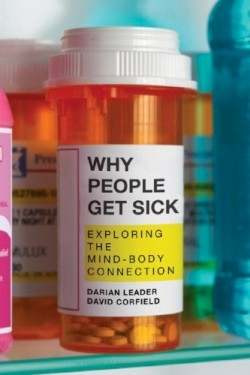
Why People Get Sick
Exploring the Mind-Body Connection
Several interesting health items have been made public recently by the BBC:
Stressed out parents make both themselves and their kids sick.
Caring for children with developmental illnesses, like Down’s or autism, weakens parents’ immune systems.
People who own cats have a forty percent lower risk of fatal heart attack.
What do these points have in common? According to authors Leader and Corfield, the former a psychoanalyst and the latter a philosopher, it’s the mind. “[A] symptom may be a way of identifying with someone else,” they write. And even more intriguing, “certain physical symptoms may even be made from words.”
What does that mean? It means that language is central to human subjectivity. Both Leader and Corfield studied Lacanian psychoanalysis in Paris, and for Freudian and mid-20th century psychoanalyst Lacan, language is the key to the subconscious—more than that, it is the subconscious. “Since Paris, we’ve always had a dialogue about psychoanalysis,” Leader said last year in an interview in the Independent. “We were interested in discovering this psychosomatic research of the ’30s, ’40s, and ‘50s. It just seemed, compared to stuff today, so sophisticated…Now it’s all statistics and fashion-driven consensus and views.”
Not that there isn’t a certain fashion these days for finding the mind over matter. But if fashion pushes doctors to spend less time covering symptoms with pharmacopeia and more time listening to patient, it couldn’t hurt. In the introduction to their book, Leader and Corfield state that “between twenty-five and fifty percent of GP visits are for medically inexplicable complaints, and the most common diagnosis in general-practice medicine today is non-illness.” Meaning, it’s all in your head. And according to the authors, it is. Arthritis is a “symptom” of unresolved anger; Cancer, a “symptom” of unresolved grief.
What to do? Listen. Leader and Darian say that illnesses are like stories, and if doctors listened more, they’d discover that people who have trouble narrating change into the stories of their lives—whether it be birth, death, job loss, promotions—are the ones who get seriously sick. And, while drugs can mask symptoms, create a sense of elation, or burn away cancer, these illness will only return in different forms until the underlying cause is uncovered and addressed.
Why People Get Sick is highly recommended for the health shelves of libraries and bookstores. The book’s readability makes it an excellent choice for book clubs. The last chapter, on the fetishes of doctors, is enough to keep people talking for…well forever.
Other recommended titles on psychosomatic health are:
The Cure Within: A History of Mind-Body Medicine (W.W. Norton, 978-0-393-06563-3): Author Anne Harrington also believes that diseases of stories and illness is the body’s way of working through psychological trauma. In her opinion, the roots of mind—body healing go back to biblical promises of healing through faith. Professor and chair of Harvard’s Department of the History of Science, Harrington looks at how faith, or “the power of positive thinking,” or its opposite, have crept in the last hundred years from the twilight zone to mainstream bestsellerdom.
John Sarno’s Healing Back Pain: The Mind—Body Connection (Warner Books, 978-0-446-39230-3) started a furor in 1991 by positing that back pain was caused by anger issues. His newer book, The Mindbody Prescription: Healing the Body, Healing the Pain (Grand Central Publishing, 978-0-446-67515-4) is another take on how unresolved or unexpressed emotions can cause a whole gamut of illness, from fibromyalgia to migraines, allergies, acne, and ulcers. Also like Leader and Corfield, Sarno believes that trauma left undealt with is the principal source of psychosomatic problems.
Medicine, Religion, and Health (Templeton Foundation Press, 978-1-59947-141-9) is by Harold Koenig, a board certified doctor and psychologist and co-director of Duke University’s Center for Spirituality, Theology, and Health. In this accessible book he discusses the relationship between religion and well-being, summarizing major trends, controversies, and the latest research. A fine compliment to the Harrington volume.
Reviewed by
Heather Shaw
Disclosure: This article is not an endorsement, but a review. The publisher of this book provided free copies of the book to have their book reviewed by a professional reviewer. No fee was paid by the publisher for this review. Foreword Reviews only recommends books that we love. Foreword Magazine, Inc. is disclosing this in accordance with the Federal Trade Commission’s 16 CFR, Part 255.
